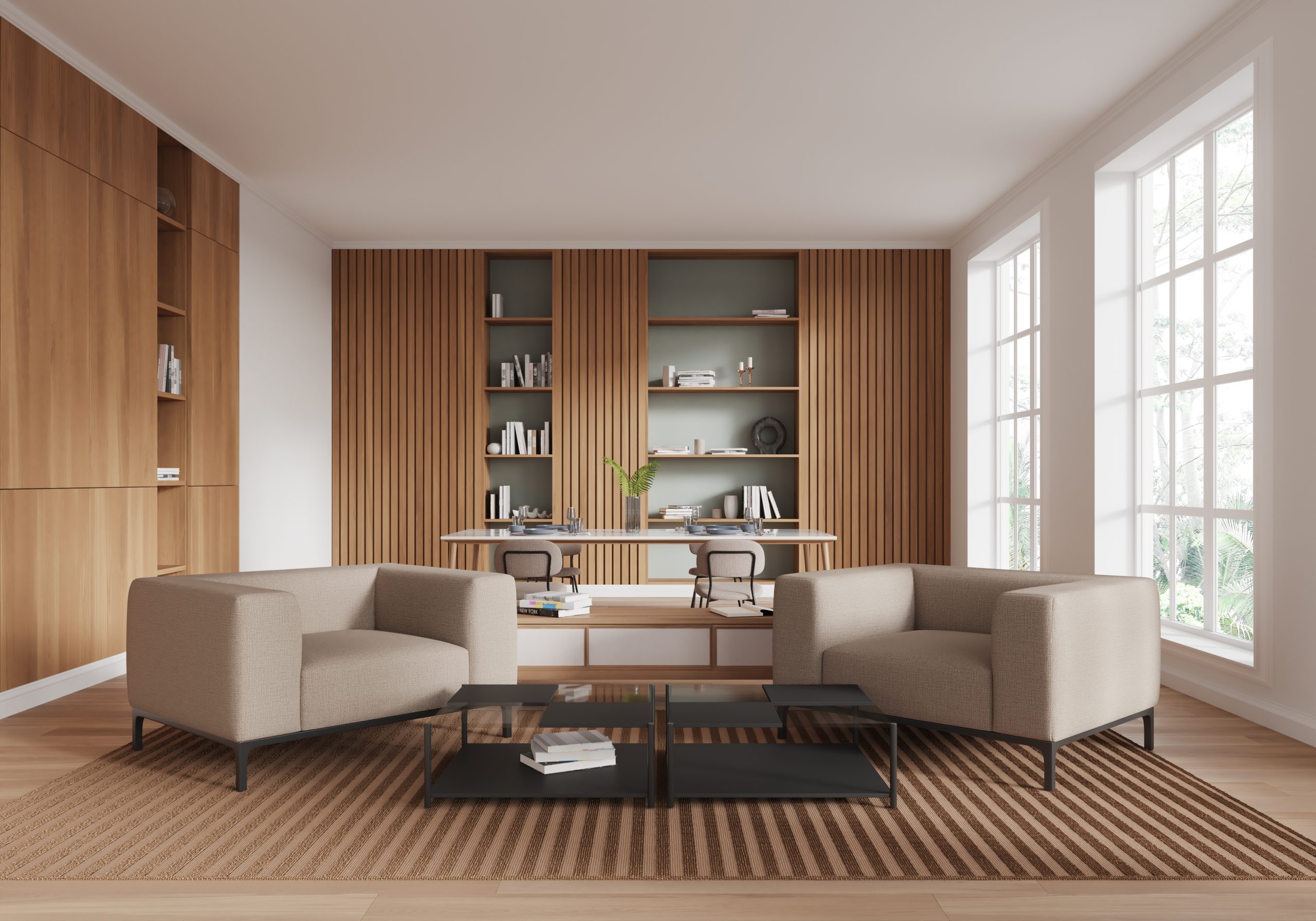Introduction
Interior design has evolved far beyond simply furnishing a space – it is an art that blends aesthetics and functionality, bringing tangible benefits to both the comfort and well-being of those living in that space. A well thought-out interior design project can transform a home into a retreat, an office into a creative and productive environment, or a commercial space into an engaging customer experience.
The objective of this guide is to provide the essential steps needed to complete a successful interior design project. We will go through each stage, from conceiving the basic idea through to integrating the final elements and adjusting according to feedback. Whether redesigning an existing space or fitting out a new one, this detailed guide is designed to ensure a methodical and inspired approach, facilitating the creative process and maximizing the functionality of the space.
Throughout this article, you will find practical suggestions, style tips and examples to help you implement the concepts described. Successful interior design combines inspiration with careful planning, and every detail plays an important role in the final result. No matter the size of the project, this step-by-step approach will bring clarity and efficiency to the process, ensuring a personalized and appealing result.
1. Defining the Concept
The first step in a successful interior design project is to clearly define the concept. This stage is meant to guide the whole process, from the choice of materials to the decor. The concept is the essence of design and is the ‘story’ you want to express through the space. Here’s how to get started:
- Identifying Personal Preferences: Start by understanding your personal style and preferences. Do you prefer a modern, minimalist, Scandinavian or rustic space? If it’s a living space, it’s important that it reflects your personality and fits in with your lifestyle. In the case of a commercial space, the concept needs to align with the brand and resonate with customers.
- Creating a Moodboard: A moodboard is a visual collection of images, textures, colors and ideas that define the direction of your design. You can use platforms like Pinterest or create a physical collage of images and material samples. The moodboard provides a big picture and helps you stay true to the concept throughout the process.
- Space Functionality: As well as aesthetics, it is essential that the space is functional. Think about the activities that will take place in the space and tailor the concept to specific needs. For example, a space for relaxing will have a different concept than one for working.
Defining a clear concept from the outset ensures consistency in every subsequent decision and contributes to a harmonious and well-integrated end result.
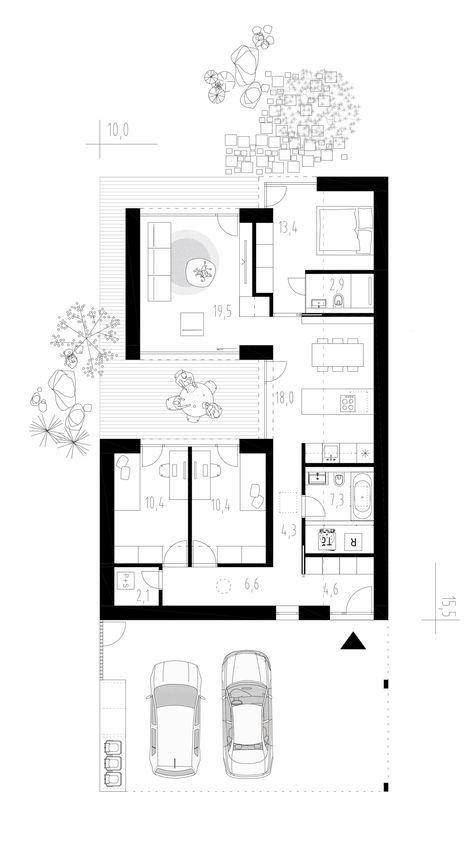
2. Space Planning
Having established the basic concept, the next step is to plan the efficient use of available space. Space planning is crucial, especially in small rooms where every inch counts. Here are the essential steps for optimal planning:
- Assessment of Available Space: Carefully measure each wall, corner and opening to understand the limits of the space. Note the locations of outlets, windows, doors and other fixtures that could influence the placement of furniture.
- Creating a Sketch: Make a simple sketch, using either graph paper or design software (such as SketchUp or RoomStyler). Place the main pieces of furniture to understand the flow of movement and how the space will be used. Efficient placement of furniture pieces allows optimal use of space and ensures comfort.
- Ergonomics and Motion Flow: Ergonomics is essential in interior design. Think about how you will move through the space and make sure there are enough access routes and that the space is not too cluttered. For example, in the kitchen, the work area should be accessible and furniture should not obstruct access.
- Division of Spaces into Functional Zones: If you’re working on a larger space, consider dividing it into distinct zones: a seating area, a work area and possibly a dining area. This helps organize the space and create a balanced atmosphere.
Space planning is the stage where you make sure the design will work not just on paper, but also in practice. A well-planned space will facilitate daily activities and contribute to a pleasant and efficient living environment.
3. Choice of Colors and Materials
Choosing the right colors and materials is one of the most important steps in the interior design process, as they contribute significantly to the overall atmosphere of the space. Colors influence the mood and perception of the space, while materials bring the texture and functional potential needed for everyday use. In this section, we will explore how to choose the ideal color and material combinations according to the defined concept.
Color Psychology: Choosing a Consistent Palette
Colors have a powerful impact on our emotions and how we perceive a space. Here are some examples of colors and their influence on atmosphere:
- White and light tones: It creates a bright, airy space and gives the feeling of more room. It is a popular choice for minimalist and Scandinavian interiors.
- Greys and neutrals: These colors are versatile and easy to combine, offering a sleek and sophisticated look. Grey can be used in modern and industrial spaces, adding depth without adding visual clutter.
- Warm colors (beige, brown, terracotta): These tones induce a feeling of comfort and are often used in living spaces and bedrooms. They create a welcoming atmosphere and are ideal for rustic or traditional styles.
- Bright colors (yellow, blue, green): They can be used to add accents and energize the space. For example, blue is often associated with calm, while yellow can bring cheerfulness and optimism.
Combining Colors and Materials According to Style
Once you’ve selected the colors and materials you want, it’s important to combine them harmoniously to create a cohesive and visually pleasing space. Here are some popular combinations by style
Modern Style
- Color palette: Neutral tones – white, gray, black, beige – with bold accents.
- Materials: Metal (aluminum, stainless steel), lacquered wood, glass and glossy plastic.
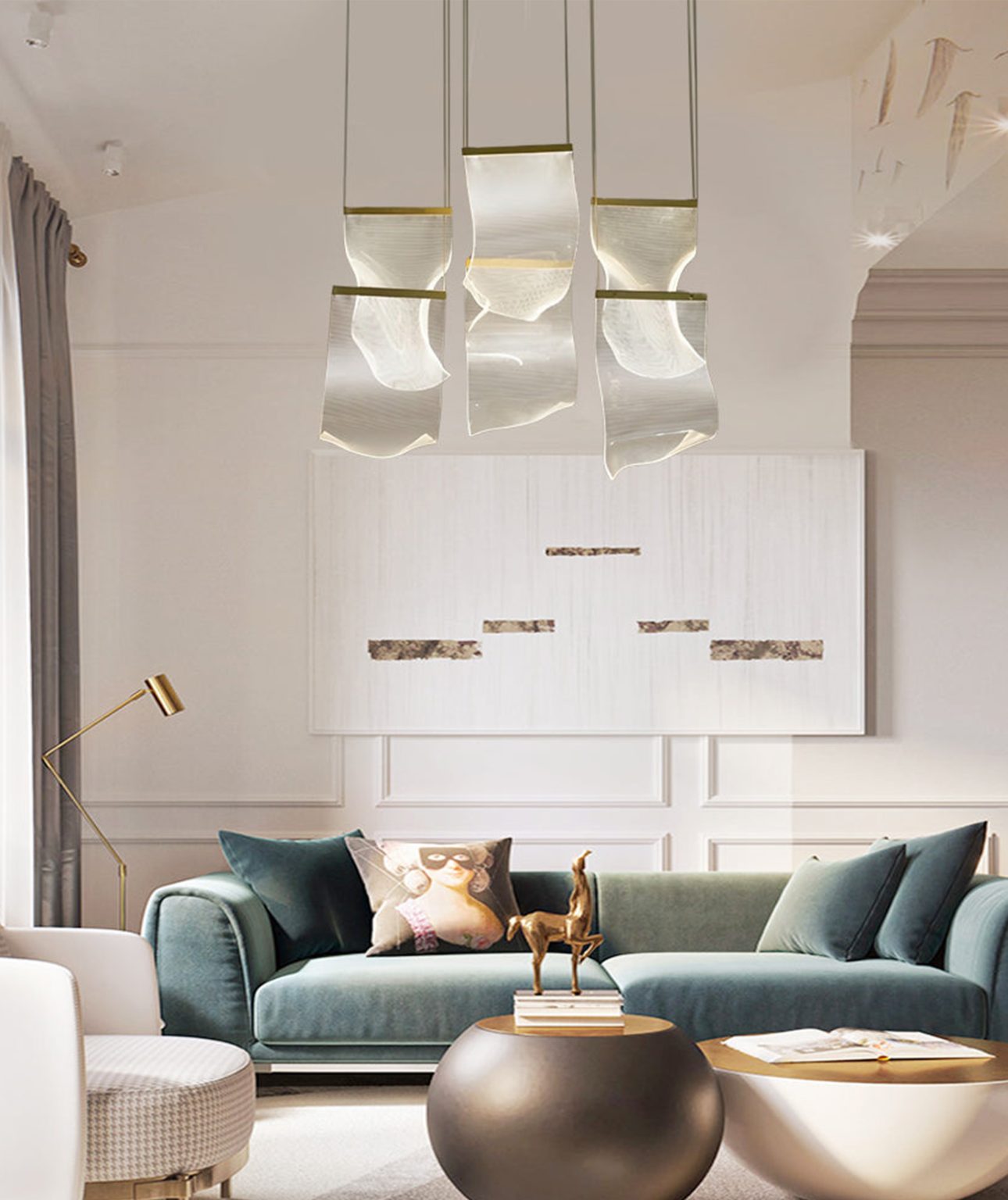
Minimalist style
- Color palette: Neutral and light colors (white, beige, gray) with subtle accents.
- Materials: Smooth surfaces, glass, metal and wood, with little decoration.
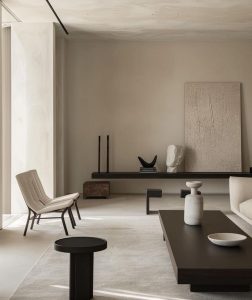
Industrial Style
- Color palette: Gray, black, brown tones and rust accents.
- Materials: Concrete, exposed brick, solid wood, patinated metal, leather, sandblasted glass,
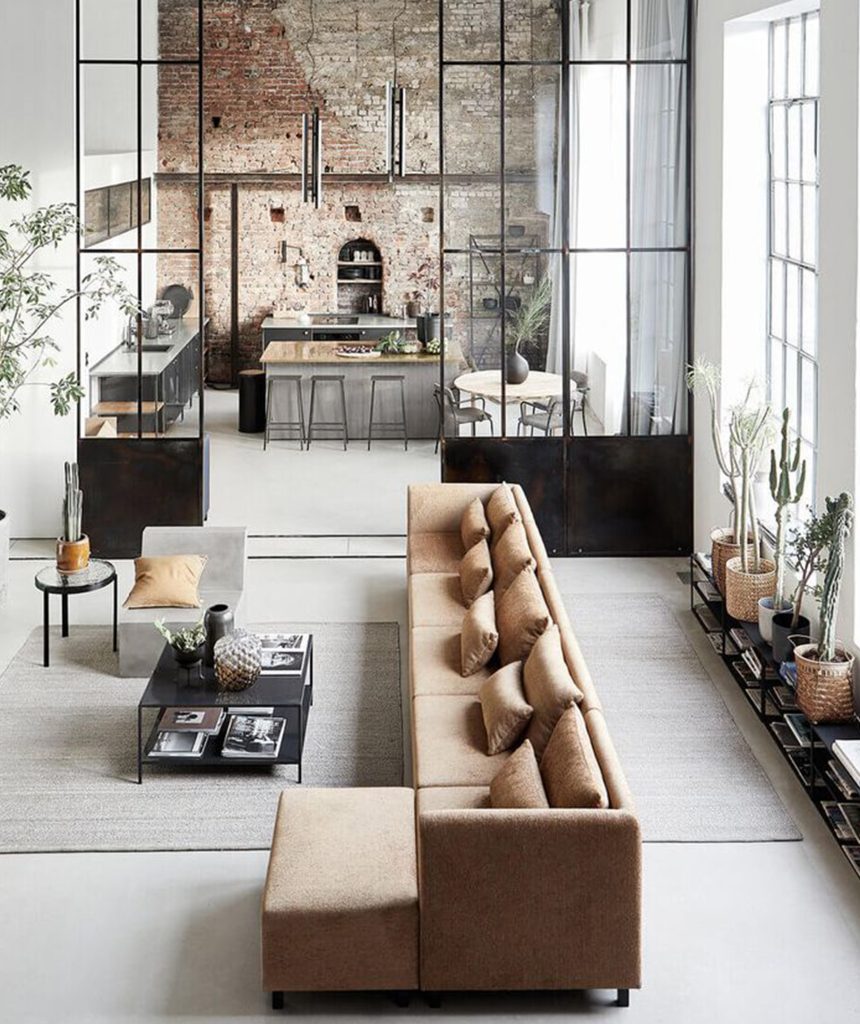
Scandinavian style
- Color palette: White, light gray, subtle pastels and light wood accents.
- Materials: Natural wood, soft textiles (wool, cotton), rattan and ceramics.
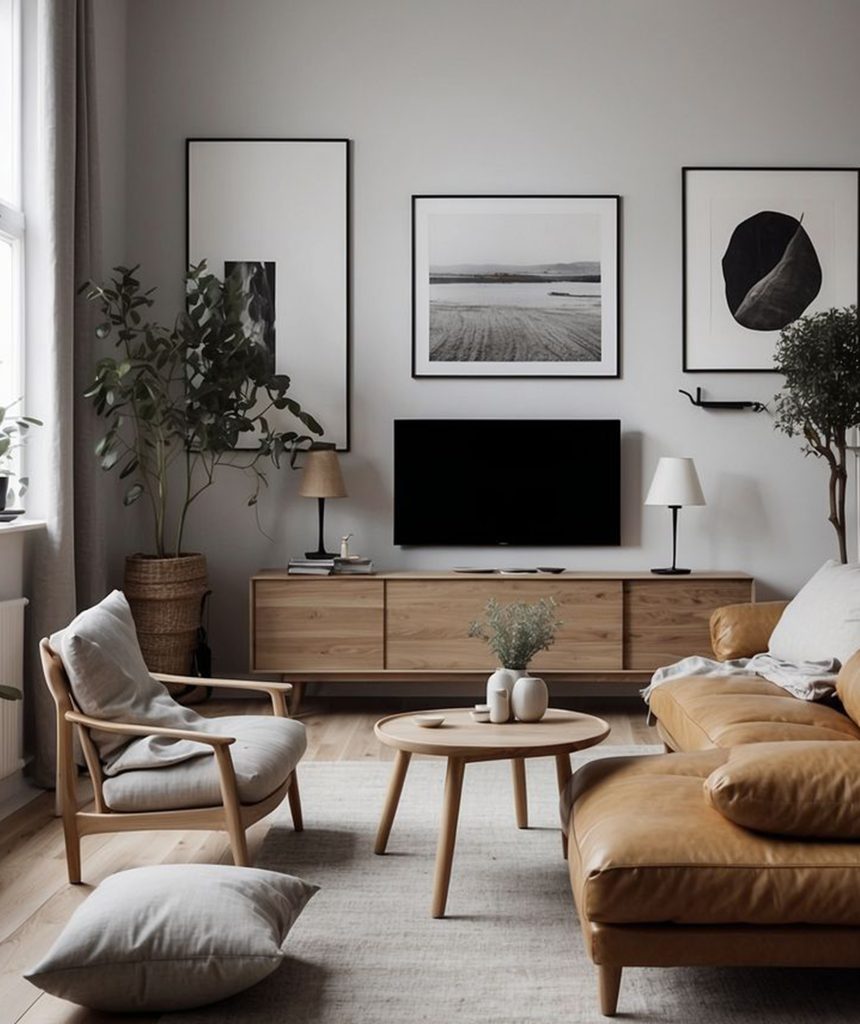
Rustic Style
- Color palette: Beige, brown, olive green and earth tones.
- Materials: Solid wood (often rough-look), natural stone, leather, thick fabrics.
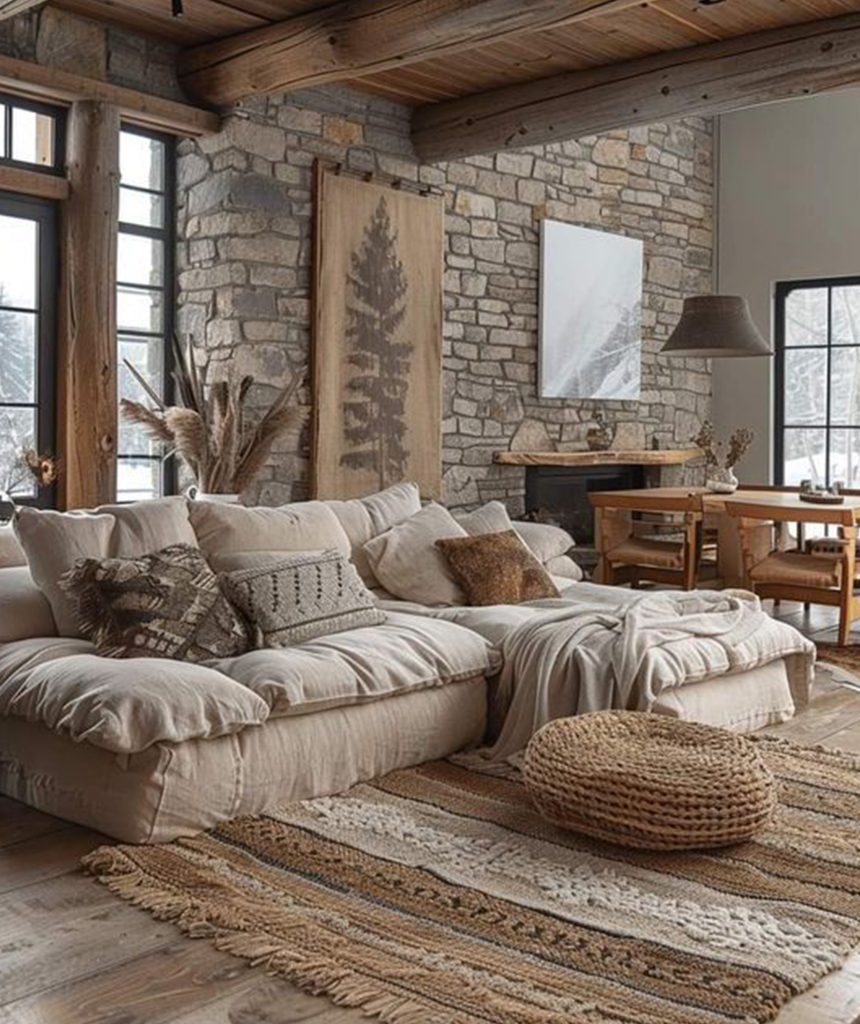
Boho style
- Color palette: Multicolor, focus on warm tones – red, orange, gold, pink
Materials: Printed fabrics, rattan, wood, metals, thick and decorative textiles.
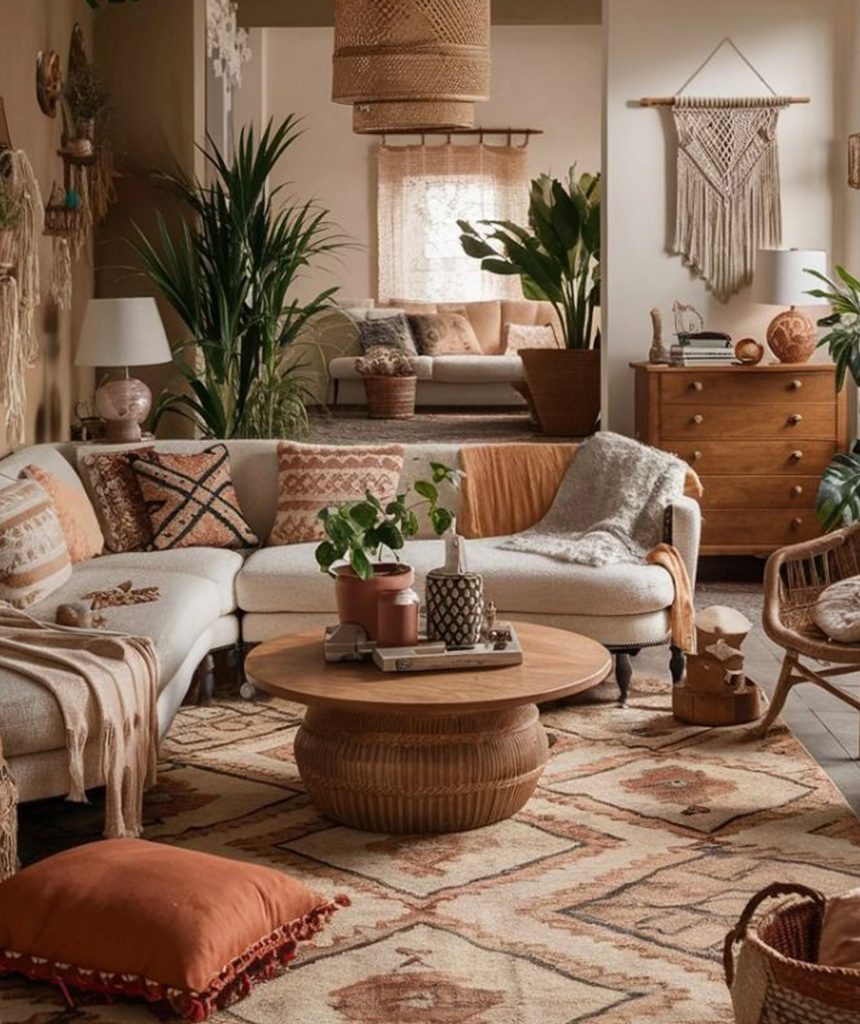
Classic Style
- Color palette: Neutral and refined colors such as white, cream, gold, olive green.
Materials: Hardwood, velvet, silk, silk, marble, rich ornaments.
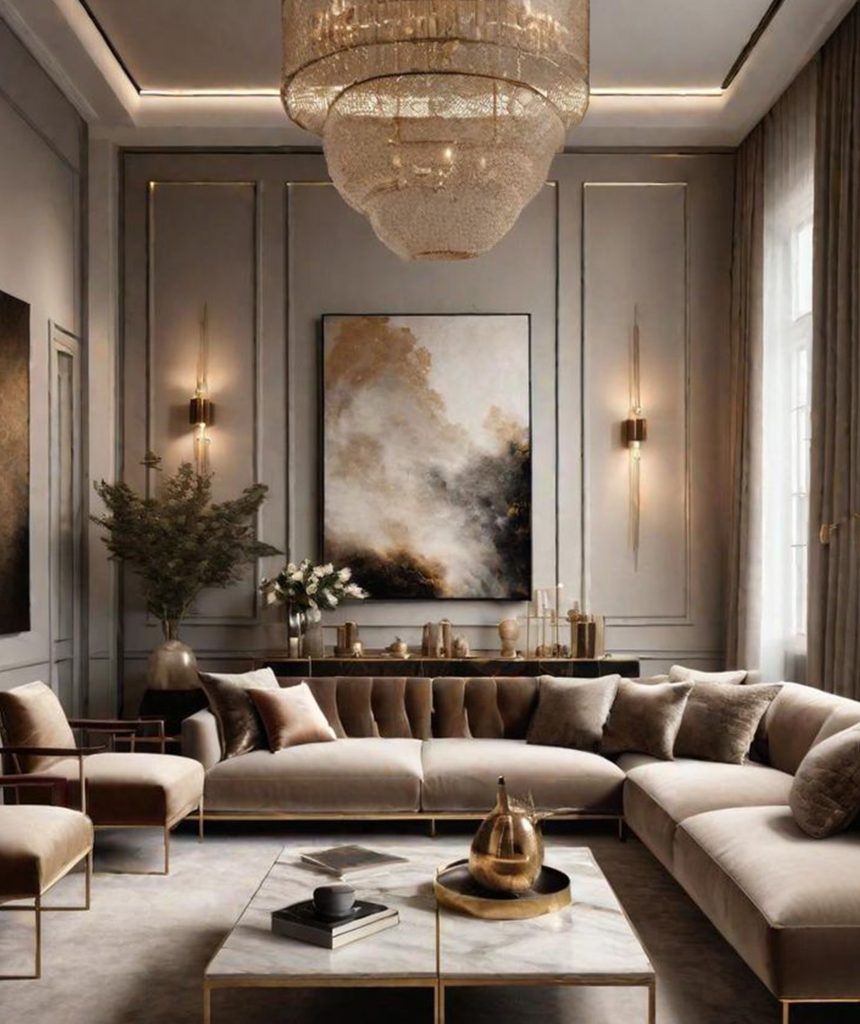
Mediterranean style
- Color palette: White, blue, turquoise, earth tones.
Materials: Ceramic, terracotta, white or aged wood, natural stone.
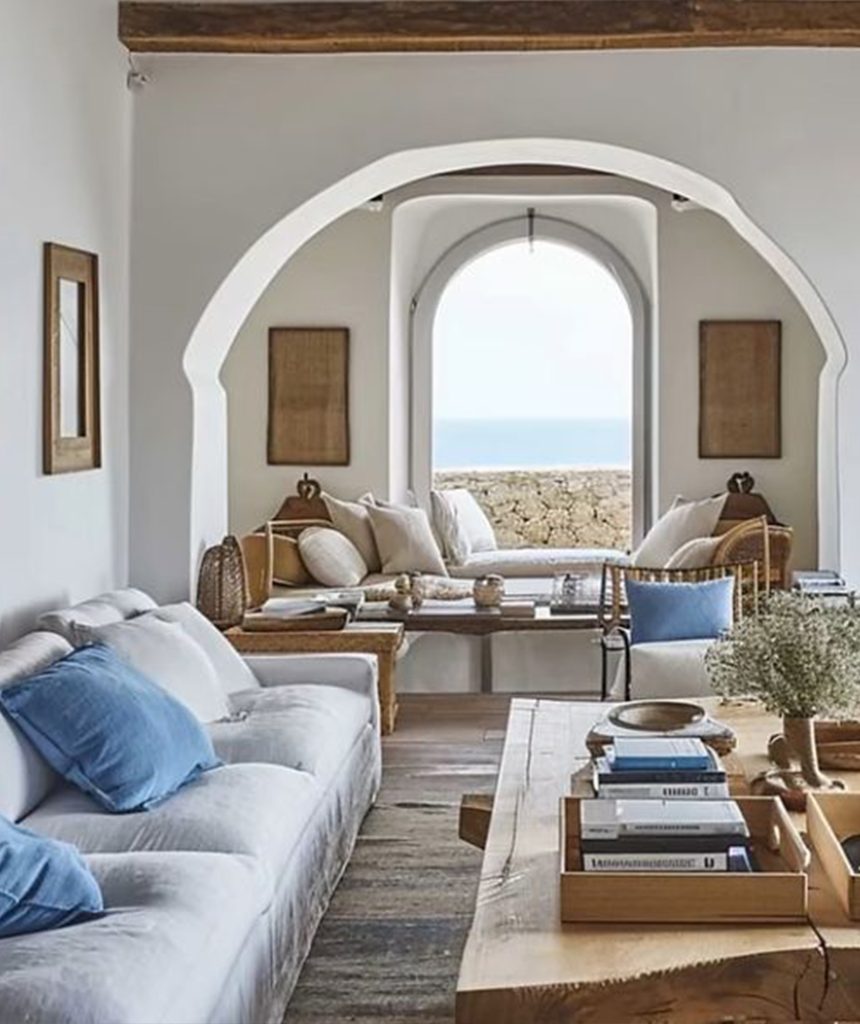
Mid-Century style
- Color palette: Warm colors – mustard yellow, olive green – and neutrals.
Materials: Hardwood, plastic, metal and velvet upholstery
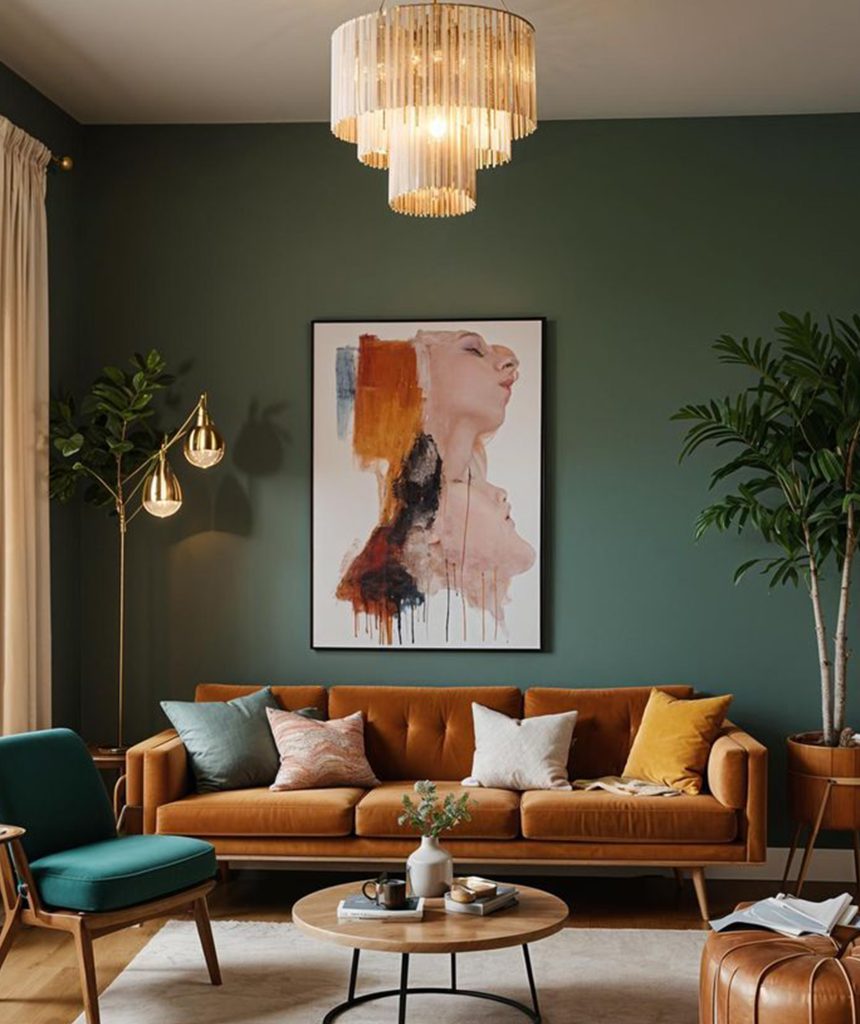
Contemporary Style
- Color palette: Neut neutrals – white, gray, black – but also colorful accents.
Materials: Modern, smooth materials – wood, metal, glass, concrete.
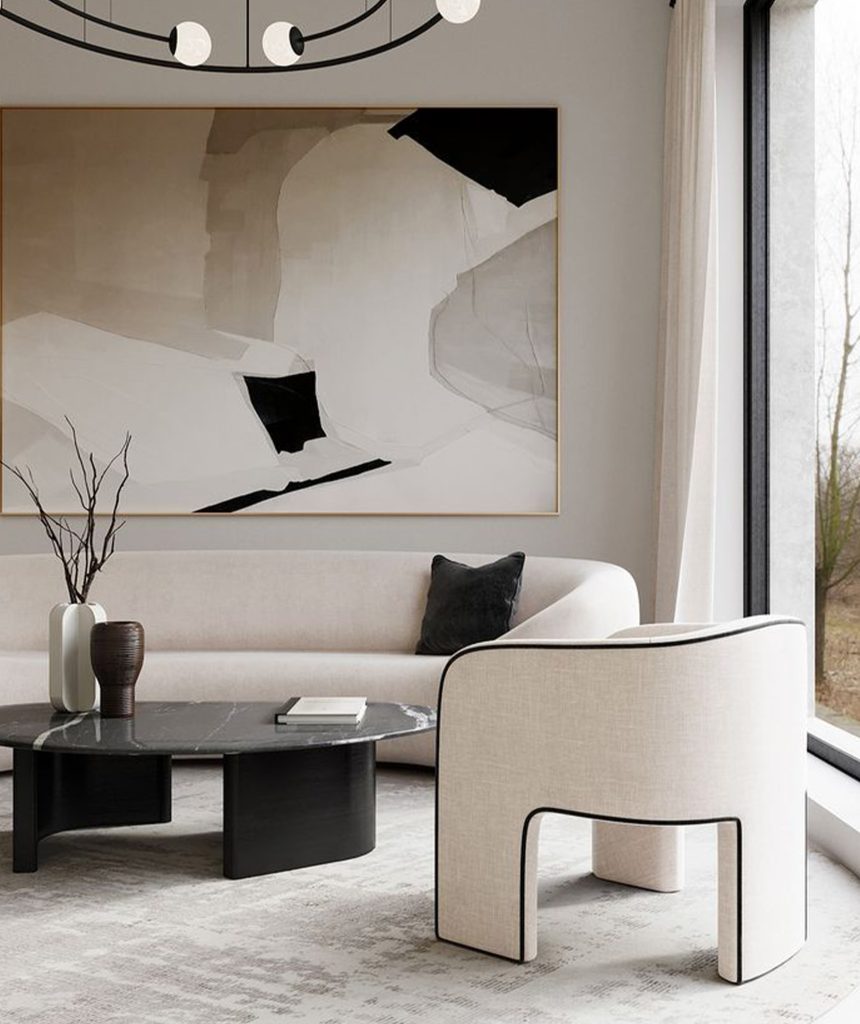
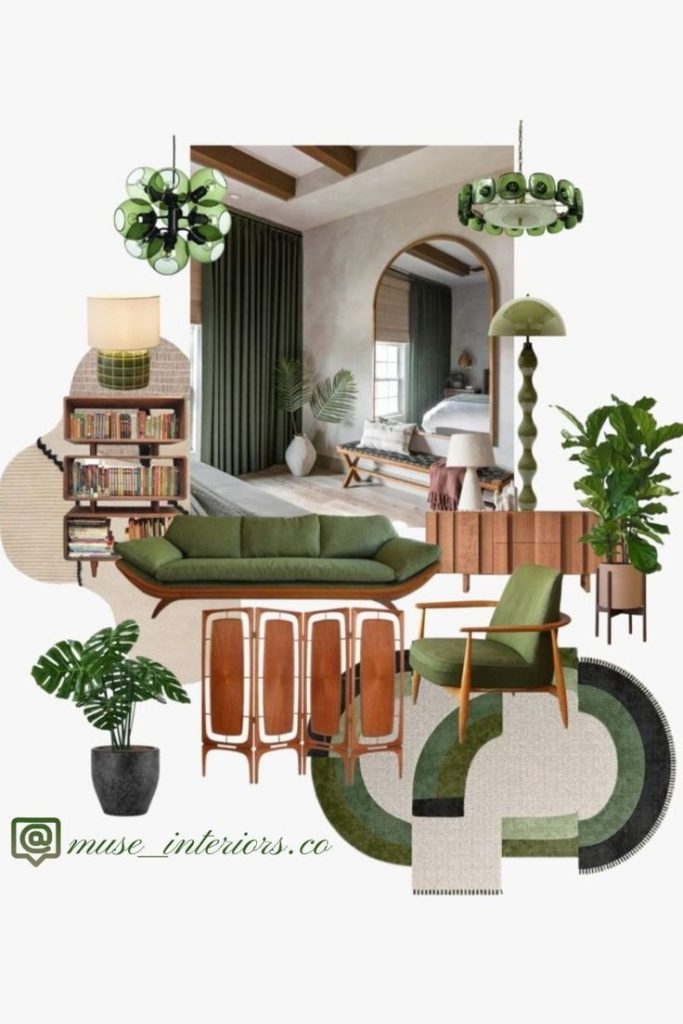
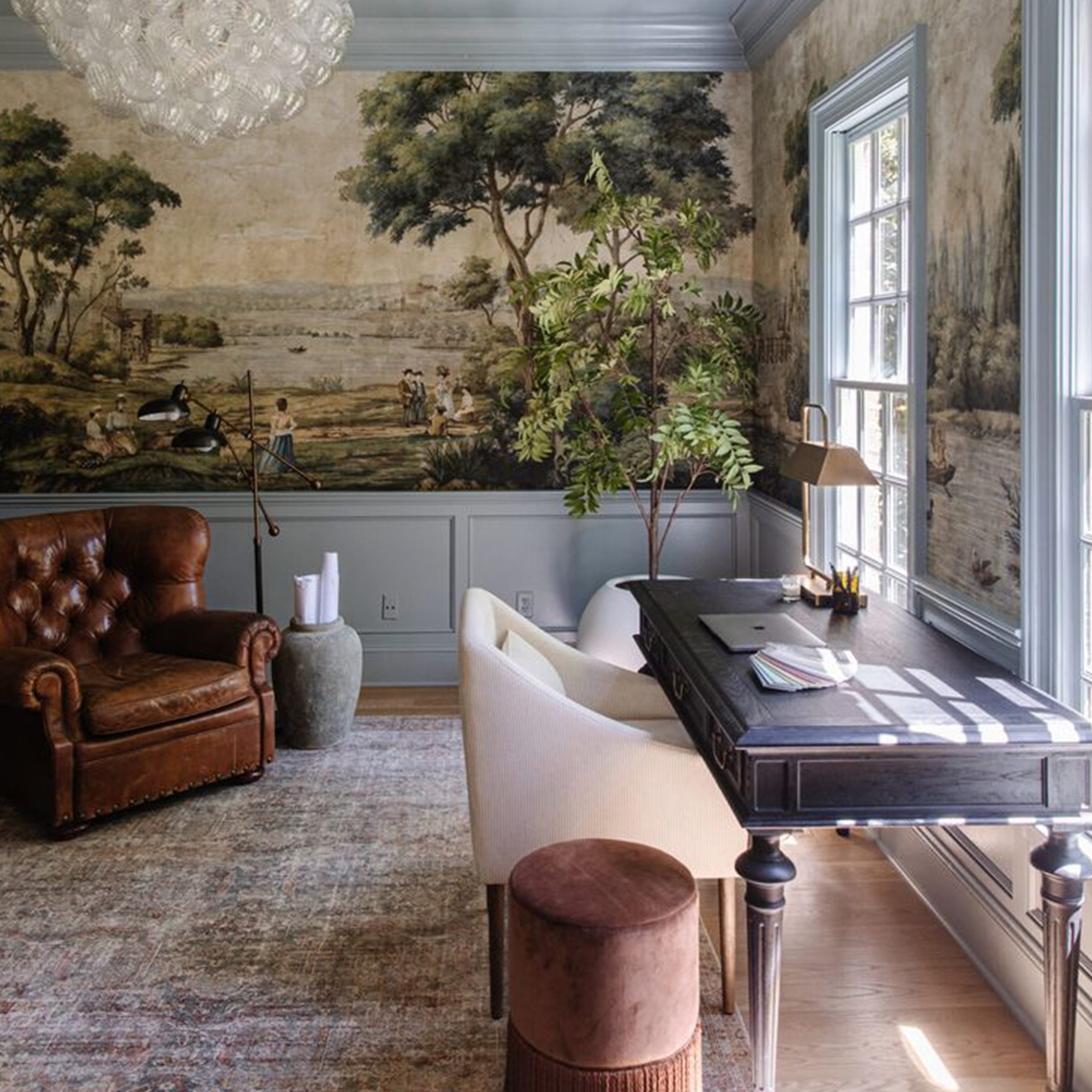
4. Furniture and Decor
Choosing Pieces of Furniture
- Multifunctional FurnitureMulti-functional furniture is especially ideal for small spaces, where every object needs to add value. For example, a sofa bed can double up as a bed for guests, while a coffee table with built-in storage can help keep a tidy look.
- Choosing Central Parts: The centerpiece is that element that draws attention and defines the theme of the space. This could be a striking sofa, an imposing bed in the bedroom or a statement light fitting in the living room. Choose pieces that not only look good, but are durable and functional.
- Ergonomics and Comfort: Comfort is essential, especially in living spaces. Choose pieces of furniture that are not only aesthetically pleasing but also comfortable and ergonomic. For example, in a home office, an ergonomic chair is a must to maintain back health over time.
Decorative Details
- Paintings and Wallpaper: Art is a great way to add character and color to a space. You can opt for abstract paintings, themed posters or even wallpaper to create an accent wall.
- Textiles: Textiles – rugs, cushions, drapes, throws, blankets – are elements that contribute to the comfort of the space and help personalize it. They can be chosen to accent or temper dominant colors and add texture.
- Plants and GreeneryIndoor plants are a simple way to bring freshness and vitality to any space. They not only improve air quality but also create a relaxing atmosphere. Choose the right plants for the light conditions in your space.
- Decorative Lighting: In addition to functional lighting, decorative lighting is essential to create a pleasant atmosphere. Table lamps, wall sconces and chandeliers are all decorative elements that can add personality and style.
- Personal and Craft Objects: Personal objects (photos, souvenirs) and craft objects (ceramics, sculptures) are important to give the space a unique character. They reflect your tastes and memories, adding a touch of authenticity.
5. Lighting
Lighting is one of the most important elements in interior design as it influences the atmosphere, functionality and aesthetics of a space. Without proper lighting, even the best decorated space can seem cold and unwelcoming. This section will explore the types of lighting, the importance of each, and the ways you can integrate different light sources to create a comfortable and well-appointed space.
Types of Lighting
- Ambient Lighting
- This is the main lighting in a room and is intended to provide uniform light throughout the space. It is usually provided by central sources such as chandeliers or ceiling lights.
- Role: Provides basic light throughout the room and facilitates safe movement.
- Example: A minimalist ceiling light in a modern living room provides clear, even light. In a kitchen, a central luminaire is essential to create overall visibility.
- Functional Lighting (Direct)
- It is used to illuminate areas where specific activities are carried out, such as reading, working at a desk or cooking. Desk lamps, spotlights and wall lamps are examples of functional lighting sources.
- Role: Facilitates activities that require clear, focused light.
- Example: In an office, an adjustable desk lamp provides precise light for reading and working. In the kitchen, under-cabinet spotlights illuminate the worktop, allowing easy cutting and cooking.
- Decorative Lighting
- Decorative lighting is meant to add a design element to a space, contributing to the overall aesthetic and creating focal points. Floor lamps, wall sconces or decorative pendant lamps are ideal examples.
- Role: Adds personality and style to the space and can complement the overall interior design theme.
- Example: In a contemporary living room, a floor lamp with a distinctive design can be an interesting focal point. In a rustic hallway, wall sconces with wrought-iron details add authenticity and style.
- Accent lighting
- Accent lighting is used to highlight certain decorative or architectural elements such as paintings, plants or an accent wall. This type of lighting adds depth and dimension to the space.
- Role: Highlights key elements and helps create a pleasant and relaxing atmosphere.
- Example: In an art gallery or an elegant living room, spotlights mounted above paintings or shelves draw attention to these elements
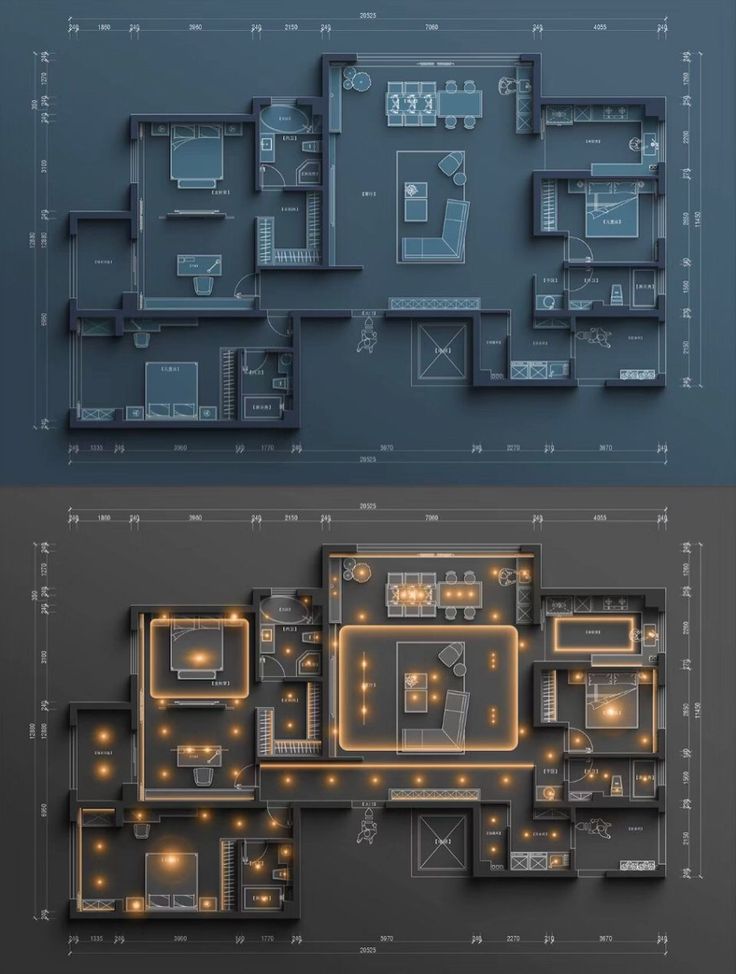
Importance of Strategic Placement of Lighting Sources
Effective lighting design depends on the correct placement of each light source. It’s important not to rely on a single source, but to create “layers” of light that meet the needs of the space from multiple perspectives. For example:
- In the kitchen: A combination of a central light fixture, worktop spotlights and a pendulum above the island provides even, functional light for all activities.
- In the living room: A ceiling lamp can provide ambient lighting, but a floor lamp next to the sofa and accent lamps around art pieces will create a warm and welcoming atmosphere.
- In the bedroom: In addition to ceiling lights, bedside lamps are ideal for reading and relaxing, and wall sconces can add style and functionality.
6. Customizing the Space
A personalized space reflects not only design trends, but also the personality and values of those who use it. Personalization brings uniqueness and a touch of comfort to any room, transforming it into a welcoming and familiar environment. In this section, we explore ways in which you can add personal and distinctive elements to a space without compromising stylistic consistency.
Photos and Souvenirs:
Display family photos or travel memories in frames that match your chosen style. Souvenirs, be they handcrafted pieces or unique decorative objects, can add character and history to the space.

Personal Collections and Local Crafts:
Handcrafted objects or personal collections can turn an ordinary corner into an interesting focal point. Integrating them into the design adds a touch of authenticity and uniqueness.
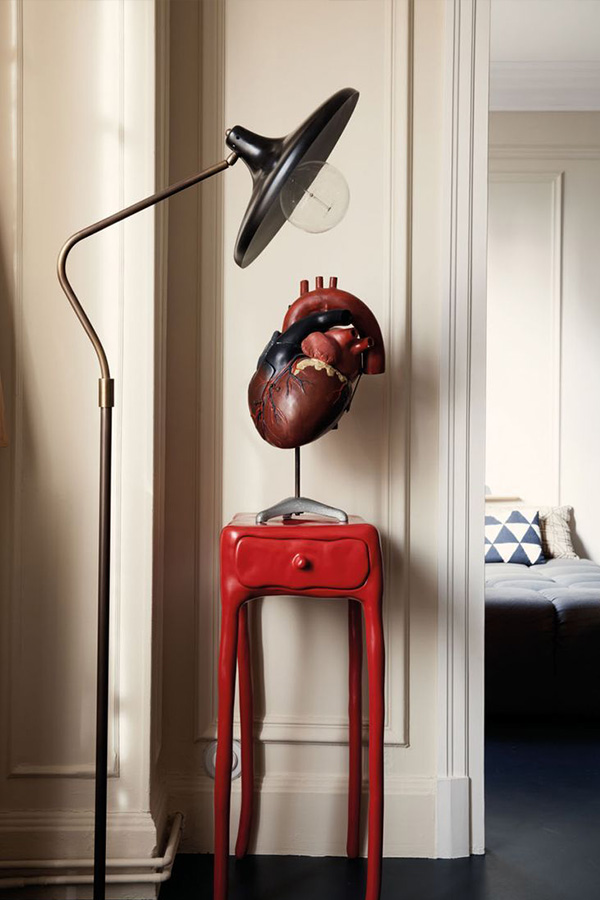
Textile Personalized:
- Whether it’s a hand-knitted quilt, an upholstered chair, or a decorative cushion in a favorite fabric, textiles are a simple way to add texture and personalized comfort.
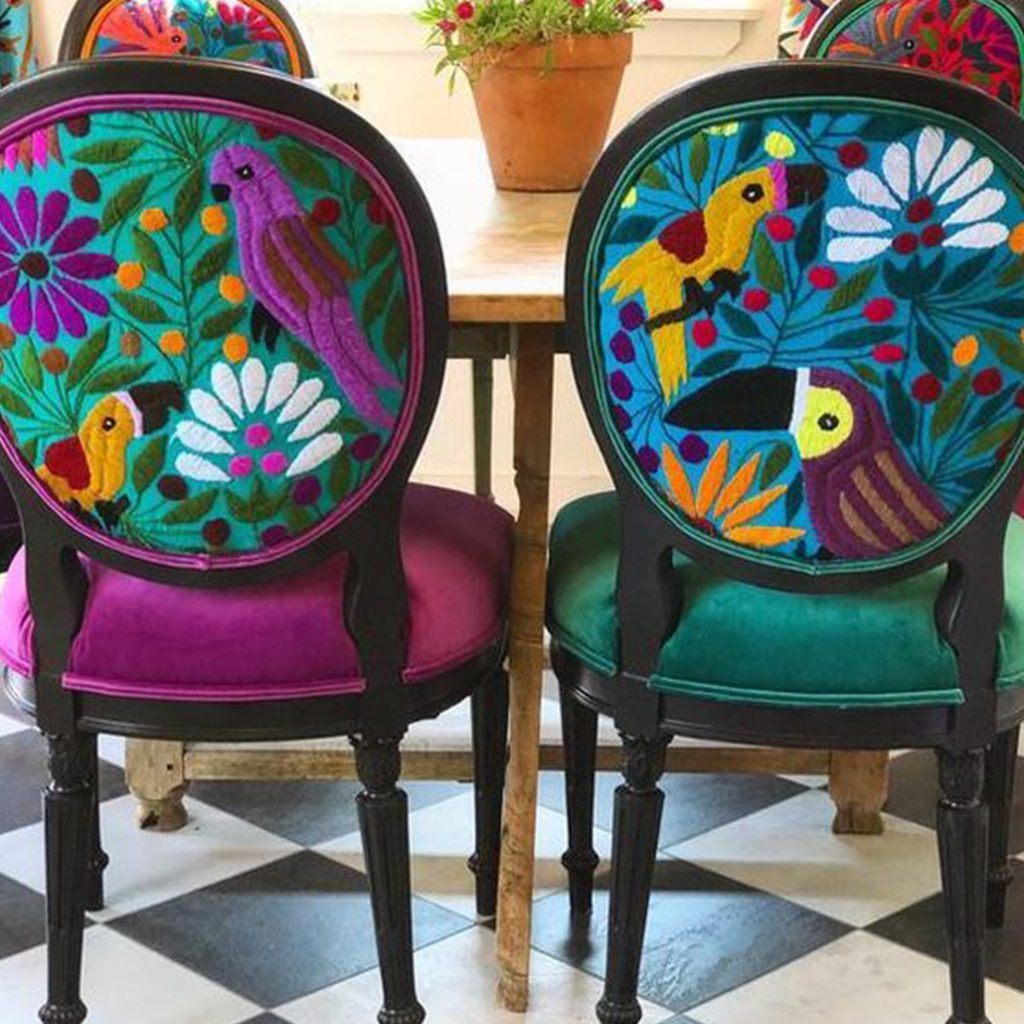
Plants and Flower Arrangements:
- Plants bring life and freshness to any space and are an affordable way to personalize. Flower arrangements or plants in decorative pots can be chosen according to your preferences and the light conditions in the room.
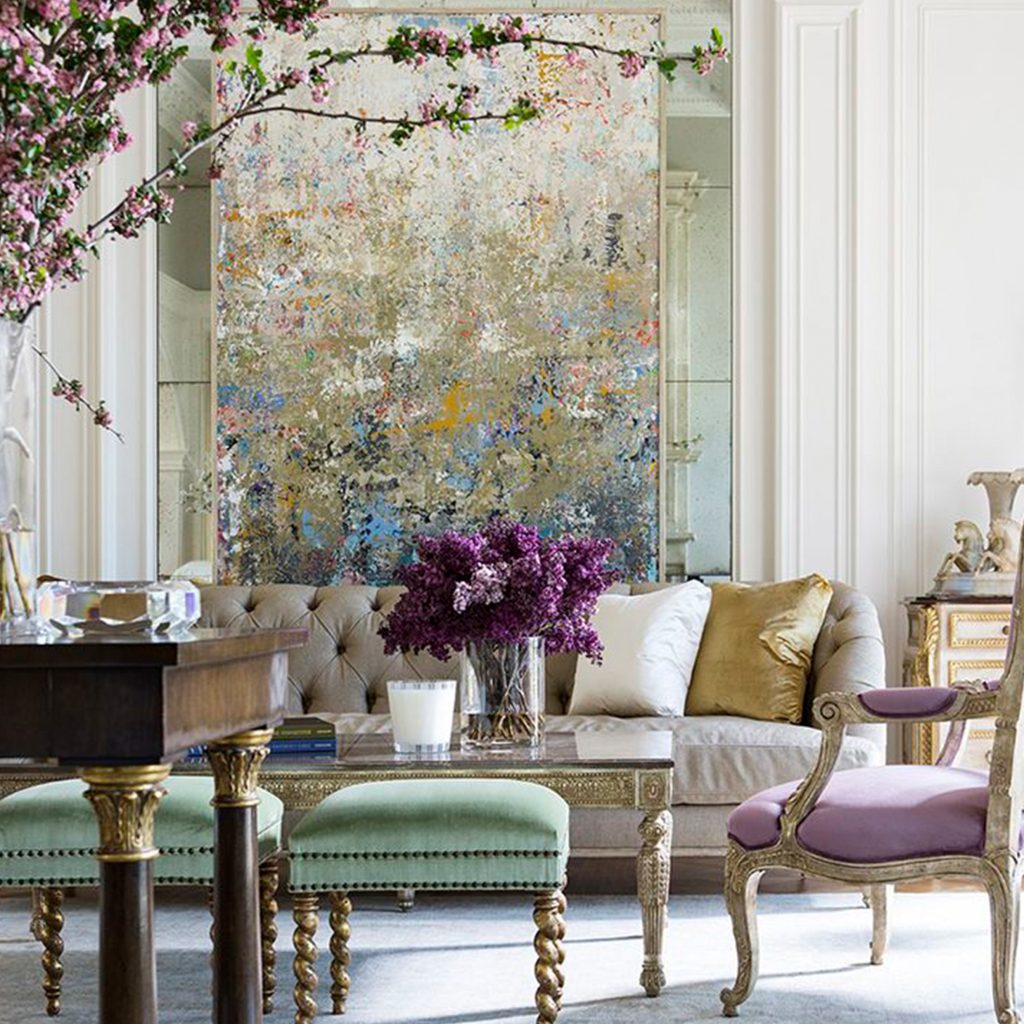
Conclusion and Call to Action
Interior design is a complex and personal process, involving a series of thoughtful steps from initial concept to final adjustments. By following the steps outlined in this guide, you can create a space that not only looks good, but is functional and reflects your personality.
Benefits of well-planned interior design include enhanced comfort, a pleasing aesthetic and a space that improves your quality of life. Whether you are at the start of a remodeling project or want to improve the space you already live in, this guide gives you a solid starting point and inspiring ideas.
Call to Action: Start now! Plan the first step to transforming your home or office, either by creating a moodboard or defining the style you want. Explore recommended sources and resources and start bringing your vision to life.
With a strategic approach and a keen eye for detail, you’ll be able to create a space that not only reflects your style, but also enhances your everyday life.
